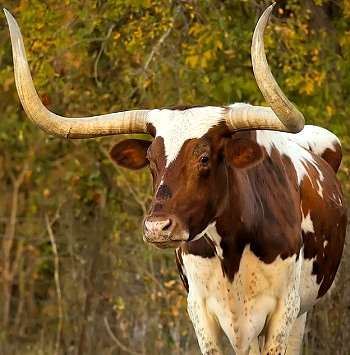Low-Cost Cow Calf Ranching Strategies
In this four-part article I explore low-cost cow calf ranching strategies to help you join that elite group of low-cost cattle producers that remain profitable regardless of what the markets and the weather are doing.
On the previous page I covered the calving strategies that low-cost beef producers use to improve calf survival, reduce the need to assist during calving, and reduce disease pressure on the newborn calves.
On this page I will dive into cattle genetics as well as the selection, culling, and breeding choices that allow low-cost cow calf producers to consistently produce highly fertile low-maintenance cattle.
Cattle Breed Selection
Picking the right cattle breed for your cow calf program can often tip the balance between being a low-cost or a high-cost beef producer.

Image Credit: Roy Niswanger, Flicker, CC BY 2.0
Pick the wrong breed and your cattle will struggle with the environmental challenges that are specific to your climate. For example, put tropical cattle breeds into cold climates and your feed costs go up. They just aren't built to stay warm. By contrast, many European and British cattle breeds aren't built to expel heat, so their health and weight gains will suffer in hot climates because of heat stress. They also don't have the parasite resistance that tropical cattle breeds are known for.
On the other hand, if you pick the cattle breed that suits your climate, your cattle's weight gains will be higher, your feed costs will be lower, and your veterinary bills will shrink substantially.
But how do you find the best beef cattle breed for your farm?
Low cost cow calf producers match the subtle and unique environmental adaptations of their cattle breed to their specific climate, grazing strategies, and marketing goals. The little details matter. And finding the right match goes far beyond just heat (or cold) tolerance and parasites. It's also about matching mature finished body weights to the desired finishing time frame, matching feet to soils, mothering instincts to predation pressures, eye pigment to UV exposure, hooves to soil types, and more.
My article about beef cattle breeds explains the step-by-step selection process to find the perfect cattle breed (or breed combination) to suit your climate and ranching strategy. And my article about purebred vs crossbred vs mixed breed cattle explains the advantages and disadvantages of using a combination of multiple breeds.
Low-Cost Breeding and Fertility Management
The right breed choice gives your cow-calf program a big advantage in the quest to become a low-cost beef producer.
But while your breed choice matters, no two cattle are identical. There is as much genetic variety within any single herd as there is between breeds. Getting your herd's genetics to work in your favor is also about learning how to sift through a herd to sort the good genetics from the bad.
That is why low-cost beef production also depends on learning how to select only the most fertile and the most low-maintenance cows and bulls for your breeding program while systematically culling all others that don't make the cut.
Your cattle selection and culling skills will determine whether your cows will calve unassisted. They make the difference between fantastically high or abysmally low conception rates in your cow-calf herd. They will determine whether your 1st-calf heifers will re-breed easily or suffer disastrous open-rates in their second breeding season. Your selection and culling skills even affect the longevity of your bulls (and consequent bull replacement costs) as well as your cow-to-bull ratio during your breeding season and the number of injuries that your bulls sustain as they struggle to establish their dominance hierarchies.
The length of your breeding season also matters. Short breeding seasons are the key to maintaining a highly fertile low-maintenance herd. Long breeding seasons erode the quality of your herd genetics over time and will increase production costs. That's why low-cost cow-calf producers stick to using the highly advantageous 42-day breeding season, never longer.
Low-cost cattle producers also understand how cattle nutrition during adolescence will affect the future reproductive development of their cattle. Understanding this relationship can significantly reduce breeding stock replacement costs by improving conception rates, increasing bull fertility, and extending the reproductive lives of your brood cows, thus reducing the number of replacement heifers required to maintain a stable herd size.
Imagine being able to boost the fertility of your heifers and bull calves - for their entire lives - simply by making sure that the young calves are gaining weight (or not gaining weight) at key stages of their adolescent sexual development. This technique is explained in detail in my article about lifelong beef cattle fertility.



